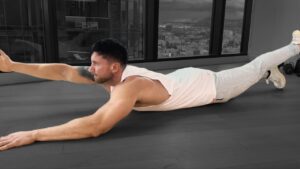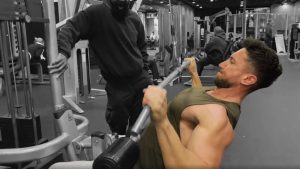The alternate front raise is one of the most popular weight training exercises for beginners. If you are a newbie to the world of fitness, your trainer is likely to recommend this exercise. It's just an alternate version of the popular dumbbell raise. Despite being popular among newbies, even experienced gym-goers can do this.
So, in case you are facing any difficulty in pulling it off, this post will discuss all there is to know about the dumbbell alternate front raise exercise.
How To Perform The Alternating Dumbbell Front Raise
To perform the alternating dumbbell front raise properly, you need to go about it methodically. Here are the step-by-step instructions to do this exercise.
Preparation
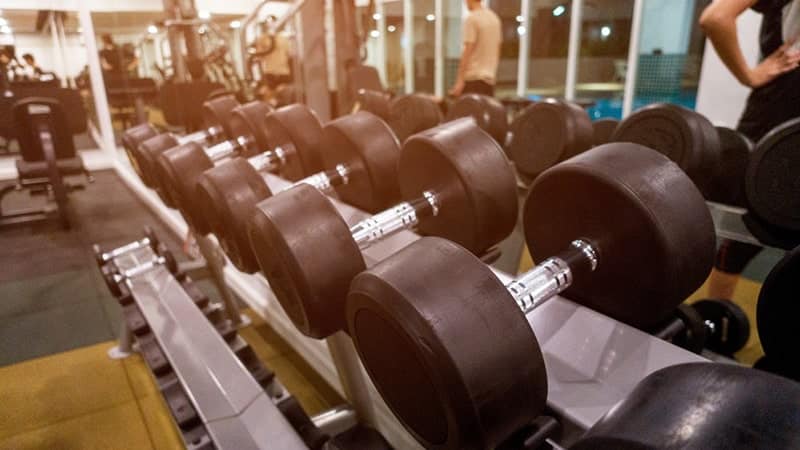
First, you have to choose two dumbbells of moderate weight. Don't try to do it with very heavy dumbbells. A good starting point is 5-pound dumbbells for women and 10-pound dumbbells for men, but you should use whatever weight you feel comfortable with.
Remember that a very heavy weight won't be good for your body. It's because the front part of your shoulder is a small muscle, so lighter weights offer the required tension to it. No need to overdo it.
STEPS
- 1Stand with your feet spread out about shoulder-width. Your back must be straight and your feet must be firmly placed on the floor. Pick up the weights and keep your palms facing down.
- 2Hold the dumbbells horizontally across your thighs. Properly grip the weights making sure that your palms are facing towards the thighs.
- 3Slowly lift one of the dumbbells, with your arm stretched out in front and palm facing down. Contract the deltoid when your arm is parallel to the floor.
- 4Inhale during the process, and pause when you feel a slight contraction or tension in your deltoids.
- 5While maintaining the tension on the deltoid, slowly lower your arm. Go back to the thighs while exhaling and maintaining the motion.
- 6Do this shoulder workout for 10 to 12 reps on each side. The alternating dumbbell front raise works wonders when you do 3 to 5 sets with 60 seconds of rest in between. Just aim to always maintain the tension on your deltoids to achieve the best results.
Primary Target of the Alternate Front Raise

The alternate front raise is an isolation exercise because it mainly targets your deltoids and helps you strengthen them.
Let’s find out a little about the deltoid muscle. The deltoid is the muscle on your upper arm and shoulder, which has a rounded shape. It consists of 3 parts - anterior deltoid, lateral deltoid, and posterior deltoid. The dumbbell alternating front raise targets all three deltoid muscles properly, so you're bound to see some gains fast!
Tips For Performing The Alternate Front Raise Correctly
Don't Rock Or Sway
Keep your back straight and your torso firm while doing the exercise. Rocking or swaying won't help you gain anything. If you find yourself rocking while lifting the weights, it might be because your arms or shoulders can't handle the dumbbell. So, always start with weights you can lift easily.
Position Your Wrists Properly
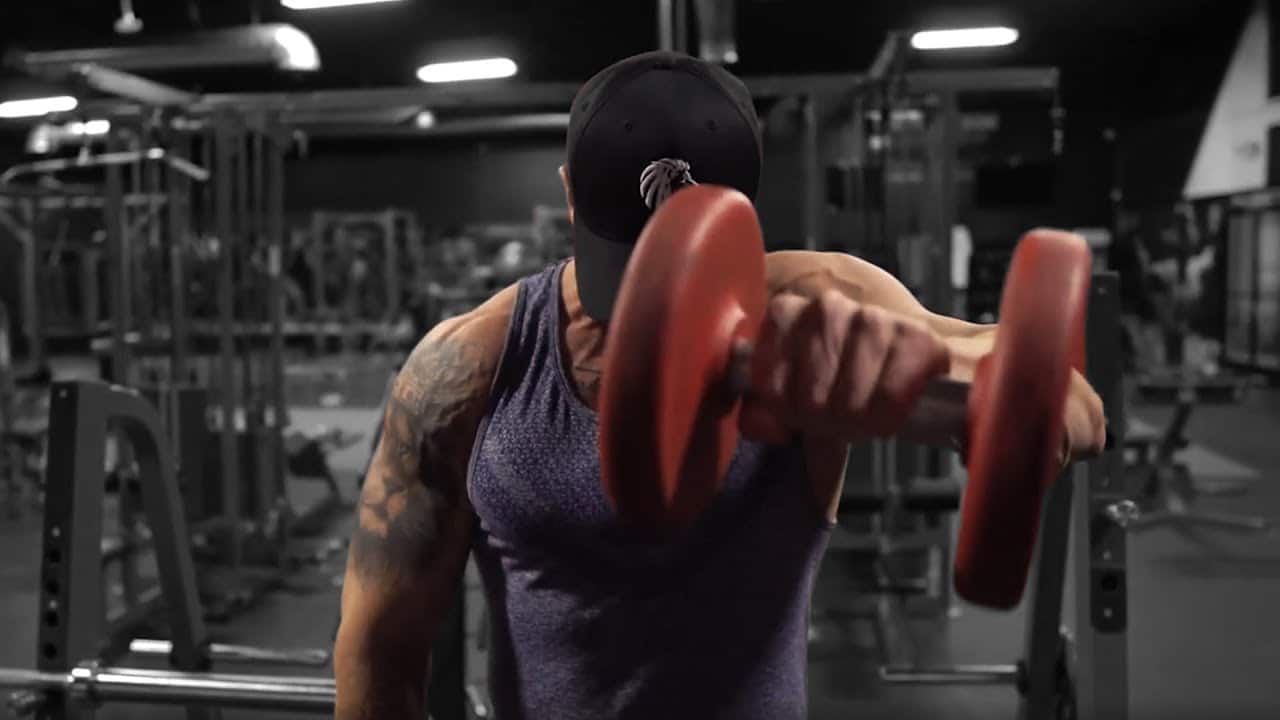
Both your wrists must be positioned neutrally. When stretched forward, make sure they are parallel to the ground. Always grip your dumbbells firmly. If you're facing difficulties in maintaining a neutral position, it's because your arms can't handle the weight. Look for lighter weights and try again.
Keep A Straight Back
If your back is not straight during the alternate front raise, you won't get those buffed shoulder muscles you desire. Avoid arching your back or rounding your shoulders and keep your core tight. Keep your back upright and brace your abs while raising the weight. This way you'll be able to maintain the tension at the shoulders.
Avoid Using Momentum

When you perform the alternate front raise, don't use momentum when lifting the dumbbells. This will reduce the effectiveness of the exercise.
Don't raise them quickly after you've just lowered them. This momentum reduces the tension on your shoulders, which doesn't help in strengthening them. Always take your time when raising or lowering your arms. This way, the shoulders are contracted properly and they get tougher!
Perform Reps For Each Arm
Be it 5 or 10, you can first complete the reps with one arm and then move to the other. This will also prevent your shoulder muscles from straining.
Exercise Variations
You can try out some variations of the alternate front raise to make things interesting. While the standard exercise is performed with dumbbells, you can also use a kettlebell or a barbell. Always start with a lighter weight to make sure your form is correct and slowly increase the weight as you become more comfortable with the exercise.
A Grip Modification

You can modify your grip for a change. Start with a hammer grip, where you position your arm in such a way that your palms are facing each other.
Be sure to keep your back straight when doing this. You can stand or sit down while doing the alternate front raise with a hammer grip - it will still target your delts.
Give Yourself A Light Challenge
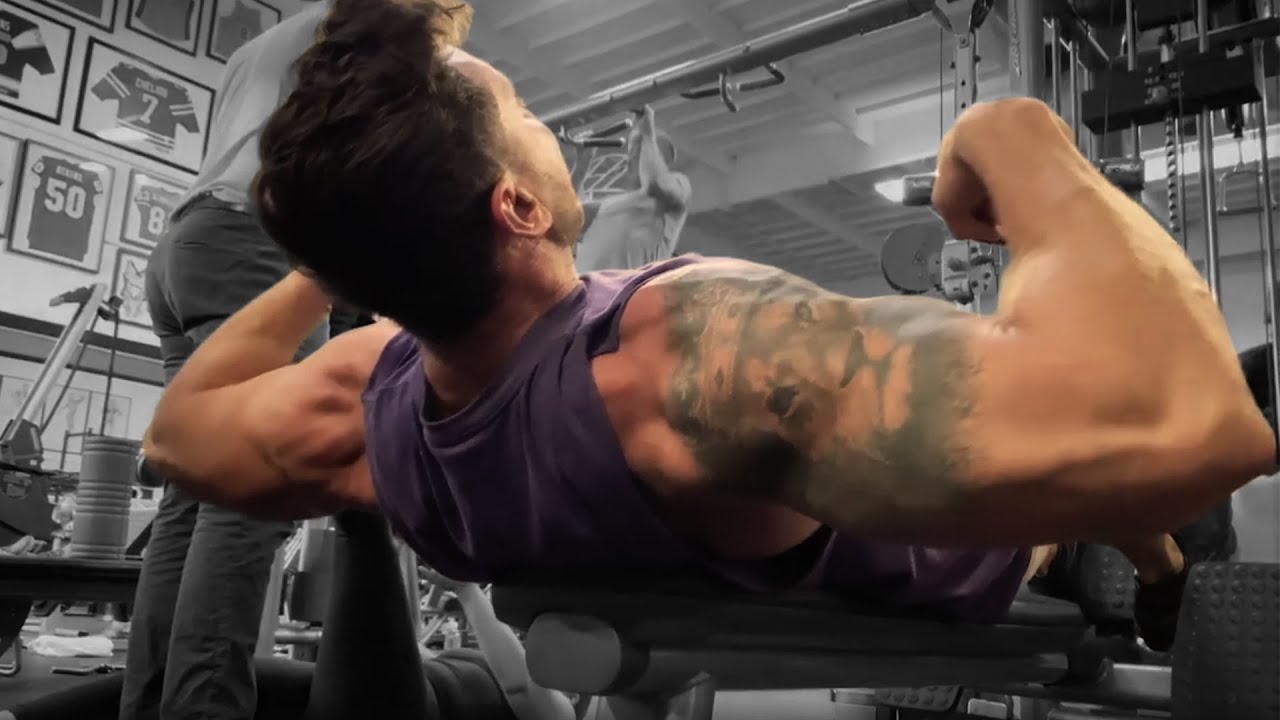
You can switch things up when you feel lifting has become a piece of cake. The first thing to do is increase the weights gradually after you are comfortable with the current weight.
You can also try performing the front raise with a bar - give the lying front raise a try! A little challenge is great for improving the efficiency of exercises.
A Word On Caution
Exercises like the alternate front raise are meant to toughen your upper body, not harm it. Therefore, if you're suffering from some pain in your front torso, this kind of movement may not be suitable for you. Before you repeat another set, consult your trainer or a physician because this type of body movement can lead to tendonitis.
Whenever you feel too much pain during the workouts, put down your equipment and give your body some rest or switch to less challenging exercise.


